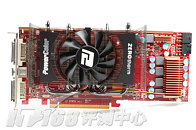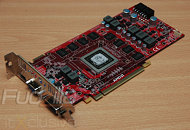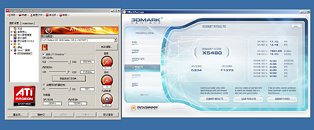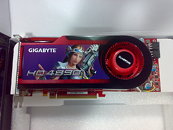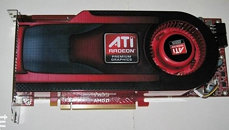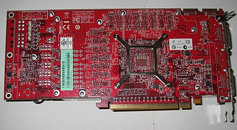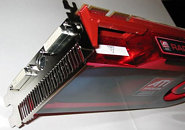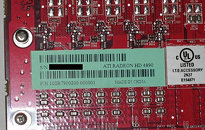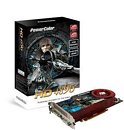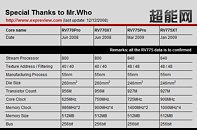
Radeon HD 4860 in the Works?
AMD released the industry's first 40 nm desktop GPU. The RV740 went on to make only one SKU, the Radeon HD 4770. The company filled its Radeon HD 4700 series almost overnight with two more SKUs positioned on either sides of the HD 4770, based on the 55 nm RV770/RV790 GPUs instead, due to stock shortages. These also impacted on the inventories of the HD 4770, which forced AMD to reposition the Radeon HD 4850 in the sub-$110 segment, creating a bit of a void between it and the roughly $150 HD 4870. If anyone of you is up for yet another ATI Radeon SKU, here's one coming your way: Radeon HD 4860.
The Radeon HD 4860 seems to have been already taped out, sampled, and pictured by sections of the Chinese media. At the heart of it is the RV790 GPU in a different configuration codenamed RV790GT. It has 640 stream processors instead of 800 on the HD 4850, except that it uses a 256-bit GDDR5 memory interface, and effectively higher clock speeds. The core is clocked at 700 MHz, and the memory at 750 MHz (3000 MHz effective). The PCB pictured shows the card to powered by a single 6-pin power connector. It is expected to be positioned in at the $130 price point, and in theory, competitive with NVIDIA's GeForce GTS 250.
The Radeon HD 4860 seems to have been already taped out, sampled, and pictured by sections of the Chinese media. At the heart of it is the RV790 GPU in a different configuration codenamed RV790GT. It has 640 stream processors instead of 800 on the HD 4850, except that it uses a 256-bit GDDR5 memory interface, and effectively higher clock speeds. The core is clocked at 700 MHz, and the memory at 750 MHz (3000 MHz effective). The PCB pictured shows the card to powered by a single 6-pin power connector. It is expected to be positioned in at the $130 price point, and in theory, competitive with NVIDIA's GeForce GTS 250.

